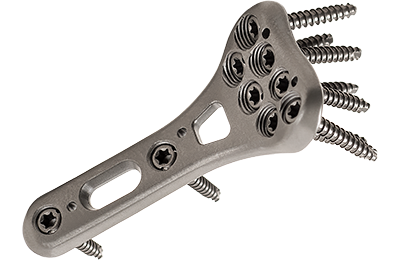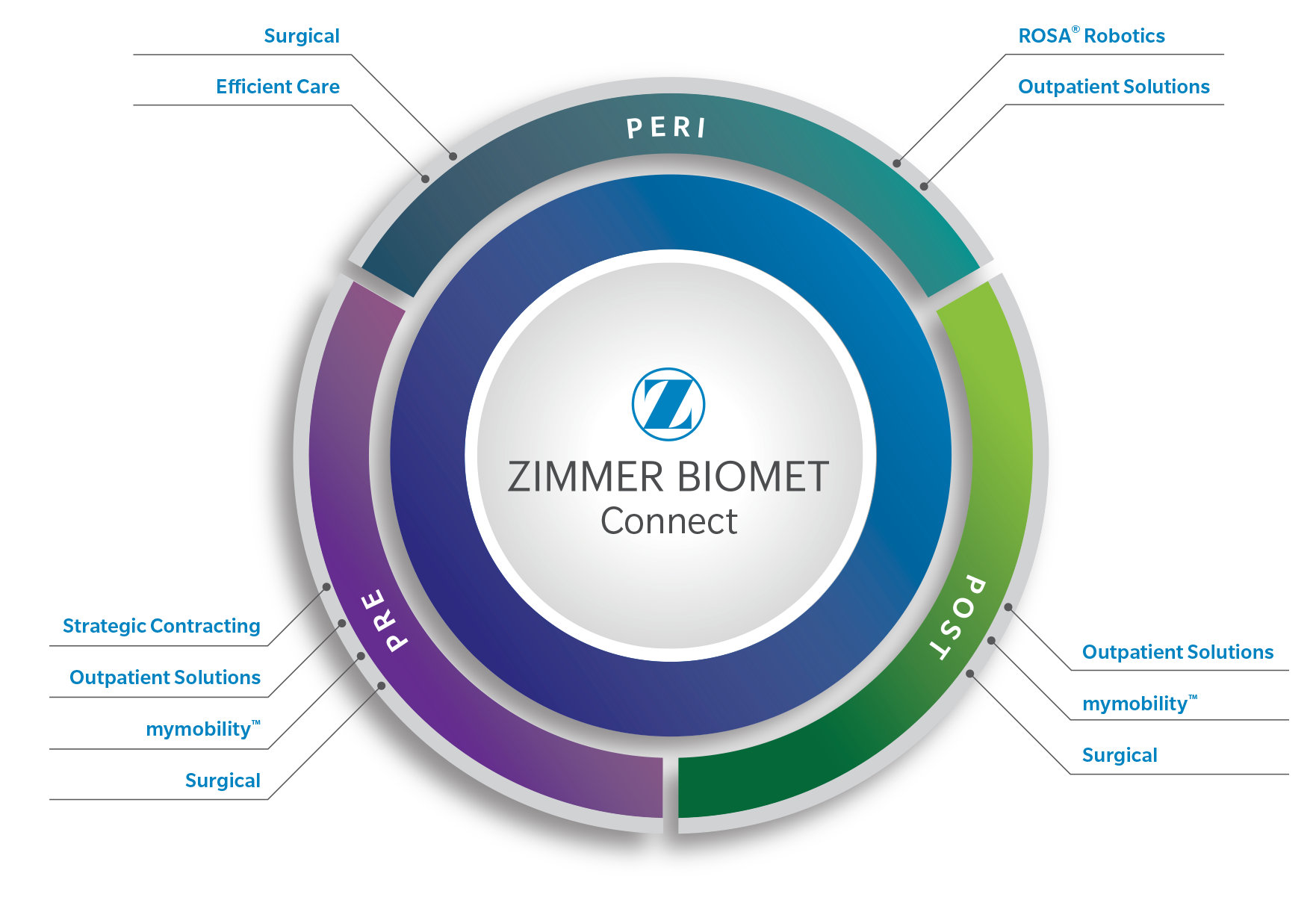The Zimmer ® Distal Radius Plating System is a versatile system designed to conform to a broad range of patient anatomy. This system offers comprehensive instrumentation to help ensure efficient, repeatable, and reliable outcomes across patient populations. There should be a low potential for intra-operative confusion with only one screw diameter and one drill bit required to complete the entire case. Maintaining a delicate balance between simplification and user function, the Zimmer Distal Radius Plating System offers:
Zimmer Distal Radius Plating System
- 1 drill bit for all screws and pegs in the system, reducing the potential for intra-operative confusion
- Instrumentation with good fracture site exposure
- Modular case structure allows for customized sets
Soft Tissue Preservation
- Anatomical contour should allow for a low-profile fit
- Off-axis locking screws sit recessed within plate hole helping to minimize screw head prominence and soft tissue damage
- Even and odd shaft screw lengths make implant selection more exact and should minimize soft tissue irritation
- Minimizing soft tissue irritation may help optimize recovery for patients
Designed for treating a Variety of Distal Radius Fracture Patterns
- System includes variable volar plate lengths with three different width options to help improving patient fit
- Dorsal column plates and extra-articular plates
- Polyaxial screw placement should allow the surgeon to target specific fracture patterns
The ZiBRA™ Anatomical Modeling System was used to design the Zimmer ® distal radius plates for anatomic fit that should abut the watershed line without crossing it. A good fit helps to provide placement adjustability.
- Determined screw angles for 2 column fixation.
- Plate contour should minimize screw head prominence, even with off axis screws, helping to reduce soft tissue irritation.
- Locking design maintains plate hole integrity for up to 3 attempts. Each locking screw can be redirected once.
- Type II anodization allows for easier screw removal.
- Polyaxial locking mechanism provides layers of circumferential locking for strong material interface.
- Screw trajectories target the most common fragment and fracture patterns, while aiming to limit construct interference with soft tissues.
The Zimmer ® Distal Radius Plating System combines advanced plate design and locking fixation with a streamlined, repeatable procedure. The system offers:
Flexibility
This system provides intra-operative flexibility through pre-determined, anatomically distributed fixed-angled trajectories with optional polyaxial locking capability. If the nominal trajectory is not targeting a specific fracture fragment, any locking screw may be angled up to 15 degrees in any direction as needed.
Customization
Modular case structure allows the set to be modified to only hold the necessary implants and instrumentation, making the Zimmer Distal Radius Plating System much more cost effective.
Ease of Use
This is a streamlined system with only one drill bit used for all screws and subchondral support pegs. The screws are 2.4mm in diameter and the pegs are 1.8mm; both use a 1.8mm drill bit. Specialized instrumentation is also included to help optimizing exposure in a standard technique.
Complete System
Although the sets have been made simple , they contain a complete offering of volar, dorsal, and extra articular distal radius plates to address various fracture patterns.
Plate features
These low-profile periarticular plates were optimized using Zimmer’s proprietary ZiBRA database to help ensuring appropriate fit for a broad patient population. They have been shaped to nearly eliminate screw head prominence even with locking screws that are placed off-axis. Polyaxial screw locking is achieved with cutouts in the heads of the screws that allow the threads on the screw head to skip levels in the plate hole threads when inserted off-axis. Type II anodization allows for easier screw removal.
Plate Material: Ti-6Al-V Tivanium
Plate Variety and Sizes:
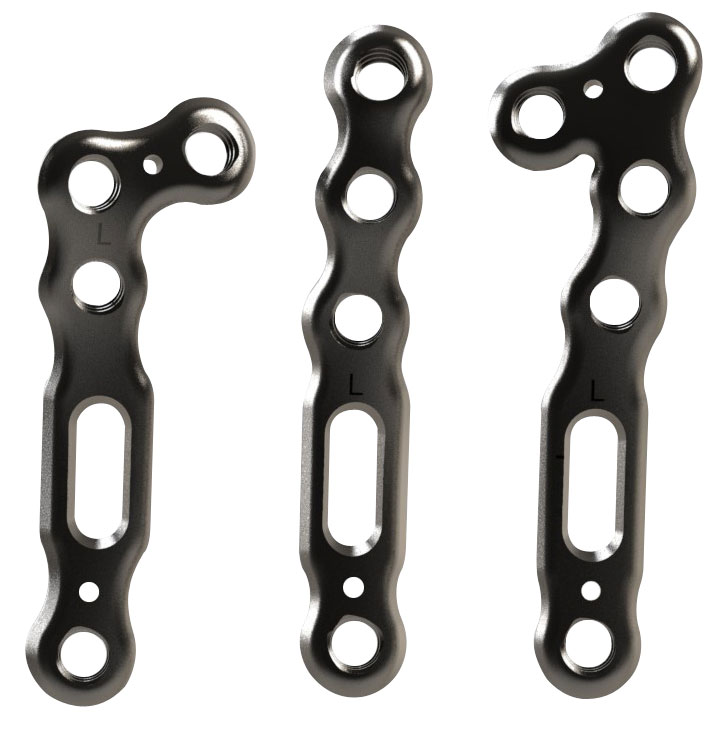 | 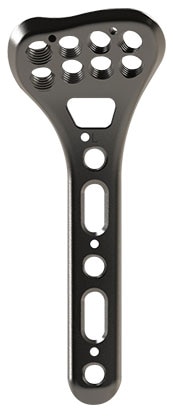 | 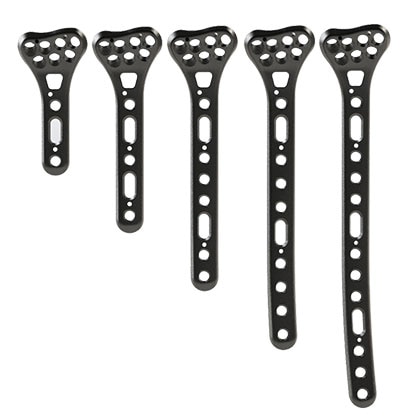 | 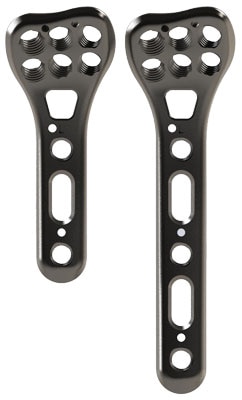 | 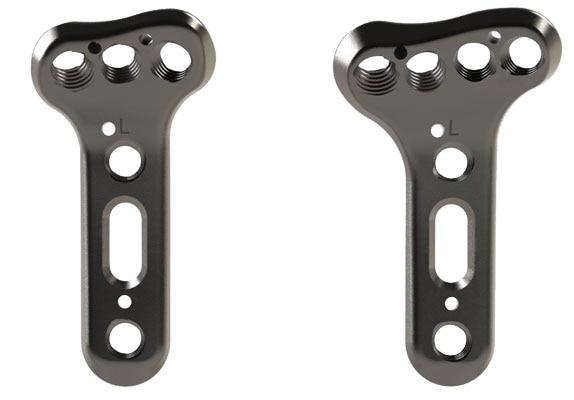 |
| Dorsal and Radial Styloid Plates | Wide Volar Plate | Standard Volar Plates | Narrow Volar Plates | Extra Articular Plates |
Volar Plates:
- Narrow Width– 3H, 5H
- Standard Width– 3H, 5H, 8H, 10H, 13H
- Wide Width– 5H
Dorsal Plates:
- Radial Styloid Plate – 3H
- Dorsal Radial Column Plate – 3H
- Dorsal Ulnar Column Plate – 3H
Extra Articular Plates:
- Narrow – 3H
- Standard Width – 3H
Screw features
All screws have been streamlined to use one drill bit and one depth gauge, simplifying the instrumentation. The cortical screws are color anodized blue for easy identification in the operating room. The locking screws and pegs in this system may be angled up to 15 degrees off-center or follow a fixed-angled trajectory with a standard drill guide.
Screw/Peg Material: Ti-6Al-V Tivanium
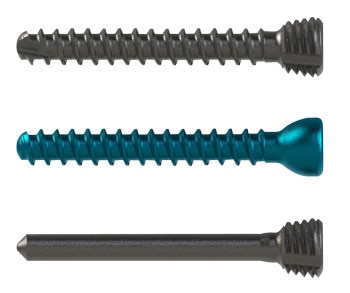 | 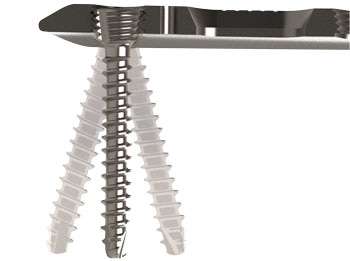 |
Instrumentation
Concise, specialized instrumentation helps ensure efficient, repeatable and reliable outcomes without over-complicating the procedure.
- Cobra Hohmanns – wider Hohmanns allow for increased fracture site exposure and visualization
- Small Weitlaner – specific for distal radius case including deep teeth and a wide spread to maximize exposure
- Polyaxial Drill guide – simple design to target hole and place drill bit within cone of polyaxiality.
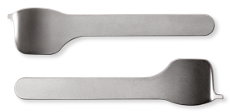 |
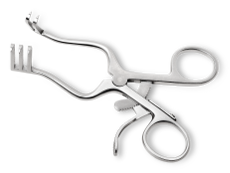 |
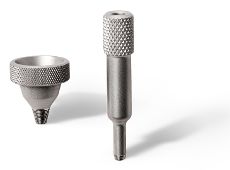 |
